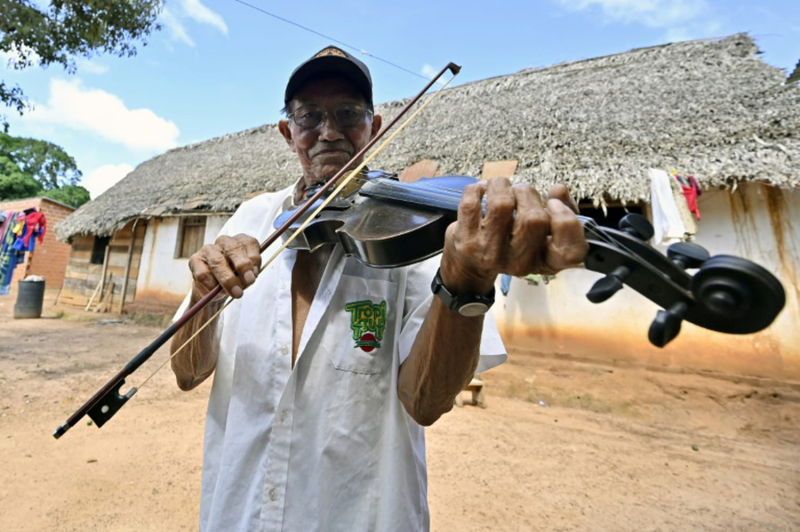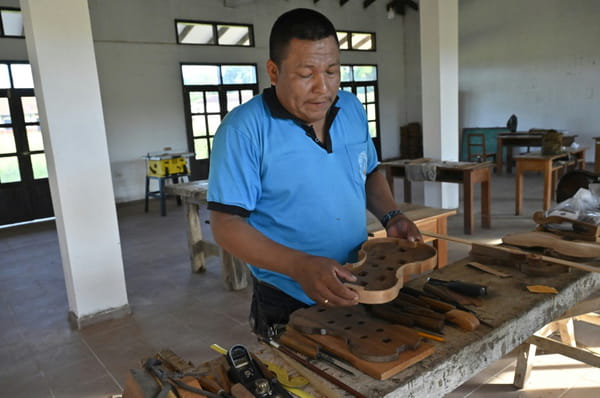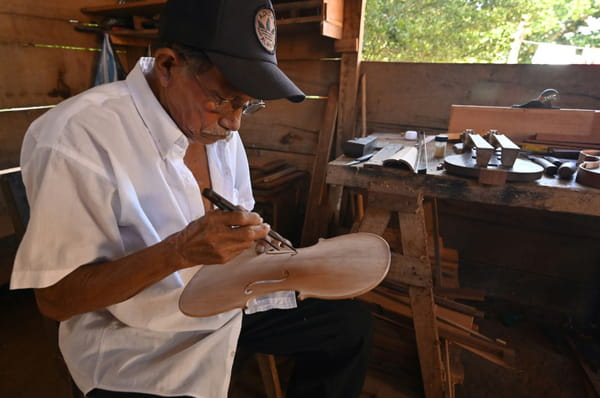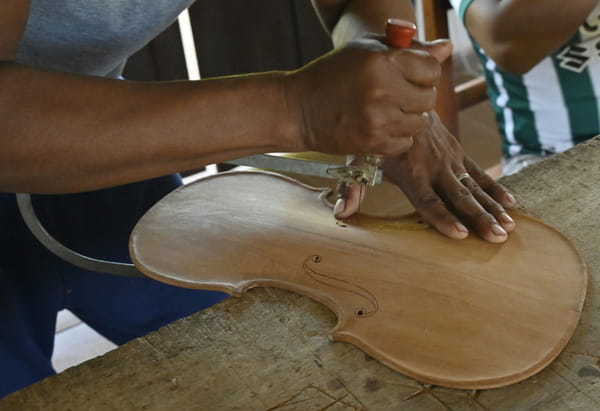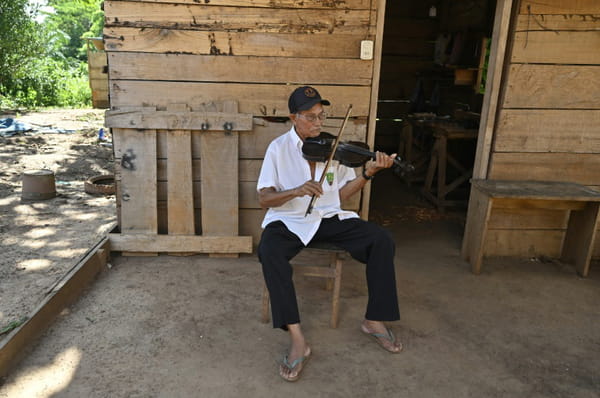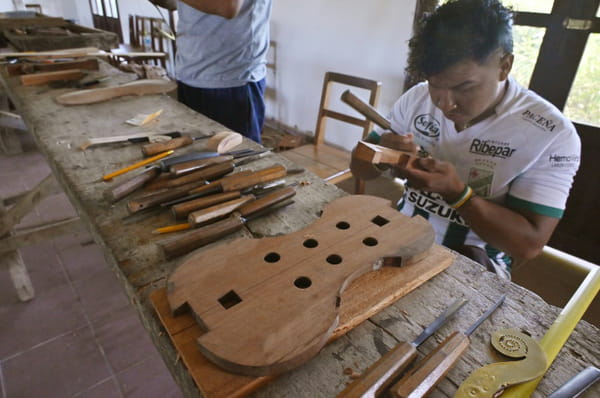With its terracotta or wooden houses and its dirt streets, Urubichá could pass for an indigenous village like any other. But this predominantly guarayo village hides a secret: its luthiers have made it the largest violin manufacturing workshop in Bolivia. “I “I've never seen a place where so many violins are made as here,” says Waldo Papu, rector of the Urubichá Institute for Artistic, Choral and Orchestral Training. Urubichá is located in the Amazon region, in the east-central part of the country, and has 8,000 inhabitants, the vast majority of whom speak Guarayo, one of the 37 dialects officially accredited in Bolivia. According to Waldo Papu, there are between 40 and 50 recognized luthiers. Although there is no official census, he estimates that there is on average one luthier for every 200 inhabitants. José Manuel Urare, professor at the Institute of Artistic, Choral and Orchestral Training, explains how to make a violin, April 22, 2024 in Urubichá, Bolivia © AFP – AIZAR RALDES The school he directs is one of the most renowned in Bolivia for baroque music. It has 600 students, around twenty of whom learn to make violins. The small town also has a symphony orchestra. But the profession is still based on tradition rather than school. < p>– “get the right sound” – Hildeberto Oreyai became a luthier thanks to his father. Aged 76, he is a renowned master craftsman, who takes two weeks to make a classical four-stringed instrument. “It takes patience to get the right one his”, he explains to AFP in a mixture of guarayo and Spanish. Violin maker Hildeberto Oreyai works on a violin piece on April 22, 2024 in Urubichá, Bolivia © AFP – AIZAR RALDES Each violin he makes from cedar or mara – two types of durable wood – sells for the equivalent of about $580, according to his family. A widower, father of five children and several grandchildren, Oreyai speaks little. He has had hearing problems for some time. “I really like playing”, repeats the old man with glasses, sitting in front of his board workshop. Unlike other master craftsmen, Hildeberto Oreyai did not succeed in having his descendants continue the luthier trade that he had learned from his grandfather. – “first for ourselves” – Making a violin at the Urubicha school, Bolivia, April 22, 2024 © AFP – AIZAR RALDES The village of violins is only accessible by a 300 km road which connects it to Santa Cruz, the homonymous capital of the same department. At the beginning of the 19th century, the Franciscans came on a mission to this village and noted that the natives were skilled artisans, but they especially noticed their penchant for music. According to anthropologists , this inclination is rooted in the idea they have of death. Luthier Hildeberto Oreyai plays the violin in front of his workshop in Urubicha, Bolivia, April 22, 2024 © AFP – AIZAR RALDES The soul of the Guarayos, to reach the grandfather, as they identify their god, must sing and play the “tacuara” or bamboo flute, explains the indigenous historian of Urubichá, Juan Urañavi. The soul rides a caiman to meet her grandfather, but if she doesn't know how to play the tacuara well, “because of “a mistake made during its life”, the caiman tips it into the river to devour it, he adds. Taking advantage of this musical sensitivity, the Franciscans used the violin as a means of evangelization. At first, these instruments could only be played in church, but later, “the natives themselves learned from the missionaries” how to make and play them, adds Papu. Hernan Yarita, student of the Institute of Artistic, Choral and Orchestral Training, works on a violin piece, April 22, 2024 in Urubichá, Bolivia © AFP – AIZAR RALDES This is the origin of the prestige which surrounds the luthiers of Urubichá, whose trade is learned not only in the family workshops, but also in the classrooms of the secondary school of the city. Hernán Yarita, 38 years old, is about to obtain his luthier diploma. He wants his violins to reach the inhabitants of the village first, so as not to let the tradition die: “There are children who do not have violin: this is why we want to make it first for ourselves, for our loved ones”. All rights of reproduction and representation reserved. © (2024) Agence France-Presse